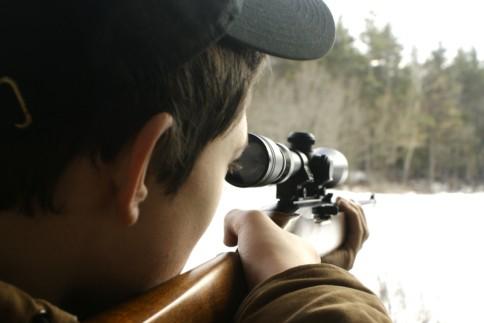Advertisement
Modern rifles and scopes are accurate, durable and dependable—seldom will either fail you in the field. The Achilles’ heel, if there is one, is the connection between the two, with scope-mounting failures accounting for more problems in the field than any other rifle issue. But this can be easily avoided. While a gunsmith can mount your scope for you, it’s really not that difficult, and more and more shooters are opting for the do-it-yourself approach. The key, as with most other projects, is getting quality parts and the right tools for the job—and following a few simple steps.
The parts
Advertisement
There are many options on the market for bases and rings, and though you get what you pay for, all will do the job. The possible exceptions are with large calibre or extraordinarily light rifles, both of which produce significant recoil. This can put a great deal of stress on the bases and rings—while the rifle moves backwards in recoil, the scope wants to stay put—so in these cases, it pays to select top-quality components.
Make sure the rings are the correct height for your scope, providing clearance between the objective lens at the front of the scope and the rifle barrel; the lower you can mount the scope, the better. Rings come in different heights and there isn’t always consistency among manufacturers, so dry mount everything before screwing them in.
Also make sure the ring diameter matches the riflescope’s tube diameter. There are two primary tube diameters: one inch and 30 millimetres. The larger 30-millimetre tube was once popular only on European-made optics, but it’s becoming more commonly used by other manufacturers these days. As for the bases, for the most part they are fairly standard, but double-check that the rings match up properly.
Advertisement
The mounting
Once you have the proper rings and bases, screw the bases into the rifle’s pre-threaded holes. The front and rear bases may be different, so check that you have them in the right place and facing the proper way. Most manufacturers will list a recommended torque for tightening down the base screws, so if you have a torque driver, follow those guidelines; if not, you’ll have to go by feel. You want the bases tight enough that they won’t wiggle loose under recoil stress, but not so tight that you strip the screw heads.
After the bases are in place, it’s time to mount the rings (assuming you have a two-piece base/ring set, which is most common). Accurate ring alignment is critical. Start with the front ring. Using a dowel, twist it into the base until it appears to be lined up. Next, do the same with the back ring).
With the top half of each ring removed, lay the scope in place along the ring bottoms, then gently screw on the top halves. Don’t try to secure the scope in place at this point—just check that there’s a good, clean fit. It’s not uncommon to find slight inconsistencies in the rings or scope. If there’s incomplete or uneven contact between the scope tube and the rings at any point, a little work with an emery board or some lapping compound should smooth things out.
The tightening
Once you’ve got a good fit between the rings and the scope, tighten down the rings. Do this a few turns at a time, alternating between the front and rear ring, and the left and right side of each ring. Tighten only to the point that you can still move the tube back and forth in the rings and twist it left and right—you still need to precisely align the scope before fully securing it.
Bring the rifle up to your eye several times, moving the scope forward and back until you have proper eye relief and can see a clear, completely round image. To align the crosshairs, select a perfectly vertical and/or horizontal mark on the wall, then mount your rifle into the shooting position and twist the scope left or right as needed until the crosshairs and the mark on the wall are aligned.
Now it’s time to fully tighten down the rings, again alternating between screws as you go and remembering not to use too much torque. Once the scope is mounted, all that’s left is bore-sighting and some fine-tuning at the gun range. And, of course, a successful hunt.

